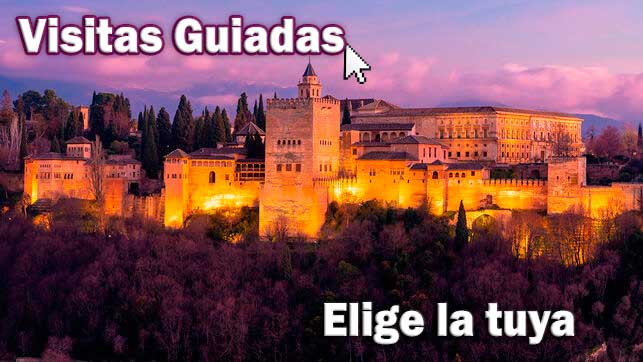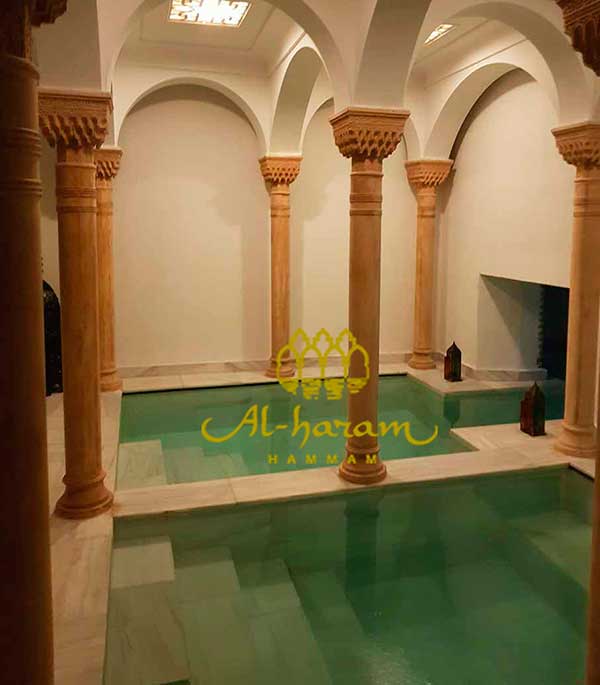- Home
- Guide Alhambra
- Main Areas Alhambra
- Comares Palace
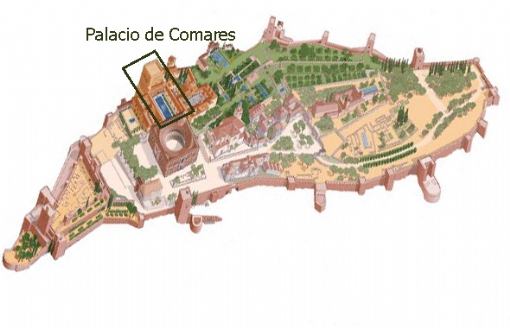
Comares Palace
The Comares Palace in the Alhambra in Granada is made up of a group of units grouped around the Patio de los Arrayanes, with arcaded galleries at the ends, the Barca Room and the Ambassadors Room, which occupies the interior of the Comares Tower, from where the Darro Valley is dominated.
Yusuf I wanted the decoration of his official residence to amaze the visitor, so he ordered that it be built and decorated exquisitely, although this work was probably not finished, since various inscriptions attribute his authorship to his son Mohamed V.
Monument history
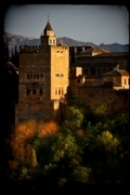
It is the most important palace, official residence of the Sultan and place where the throne room was located. It was built and richly decorated by Yusuf I, to whom we owe much of the existing buildings in the Alhambra.
In the Golden Patio we find the facade of access to this palace, of great beauty and built by Muhamed V, son of Yusuf I. In it two doors open, the one on the right gave access to the family units and the one on the left ( where the visit continues) to the official area of the palace. The decoration is very rich throughout the facade, with ceramic base, and plasterwork, highlighting the beautiful wooden eave.
Continuing the visit, we arrive at the Patio de los Arrayanes, also known as de la Alberca and de Comares. It is a classic Arabic-Andalusian patio, with two porches on its smaller sides, a large pool in which the buildings are reflected, surrounded by arrayán massifs, and two marble piles that pour their waters into the pond. The porches have 7 semicircular arches, being the central one, of openwork plaster cloths. Two floors rise above the south porch, one with seven windows with wooden lattices, the central double being the other, and another one with a gallery on the patio. The dependencies of the southern portico were destroyed when the palace of Carlos V was built, which is attached to it.
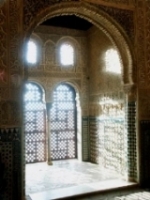 On the north side we find the largest room in the entire Alhambra, the Hall of Ambassadors, formerly left the throne. This room is sheltered inside the Comares Tower, which with its 45 m. tall is the largest of all the fortress. To reach it, and after crossing the porch we find, first of all, the Barca room, with a beautiful wooden ceiling, a copy of the original that burned in a fire in the 19th century; as a curious note to say that, behind the door that opens on the left side of this room is the latrine of the palace, which cannot be visited. Leaving the Barca room, in the space between it and the Ambassadors Hall, we can see, on the right, a small oratory, probably reserved for the Sultan.
On the north side we find the largest room in the entire Alhambra, the Hall of Ambassadors, formerly left the throne. This room is sheltered inside the Comares Tower, which with its 45 m. tall is the largest of all the fortress. To reach it, and after crossing the porch we find, first of all, the Barca room, with a beautiful wooden ceiling, a copy of the original that burned in a fire in the 19th century; as a curious note to say that, behind the door that opens on the left side of this room is the latrine of the palace, which cannot be visited. Leaving the Barca room, in the space between it and the Ambassadors Hall, we can see, on the right, a small oratory, probably reserved for the Sultan.
We arrived at the Ambassadors Hall, wrapped in a relaxing gloom. The lighting comes from the windows present in the dressing rooms that open on the walls, three for each wall. In the central, in front of the door, was where the throne was located and is the most richly decorated. Higher up a series of openwork windows illuminate the beautiful wooden ceiling, which represents the seven skies of the Islamic cosmos that travels through the soul of the believer until he finds Allah.
Again in the courtyard, we will continue the visit for a room on the east side, which connects us with the Palace of the Lions. This communication is modern, since in the past these two palaces were not directly communicated.
Do you have any doubt? Call us
+34 958 91 80 29 From Monday to Friday 9.00 - 14.00 and 17.00 - 20.00Other Recommended Services
Choose your service

